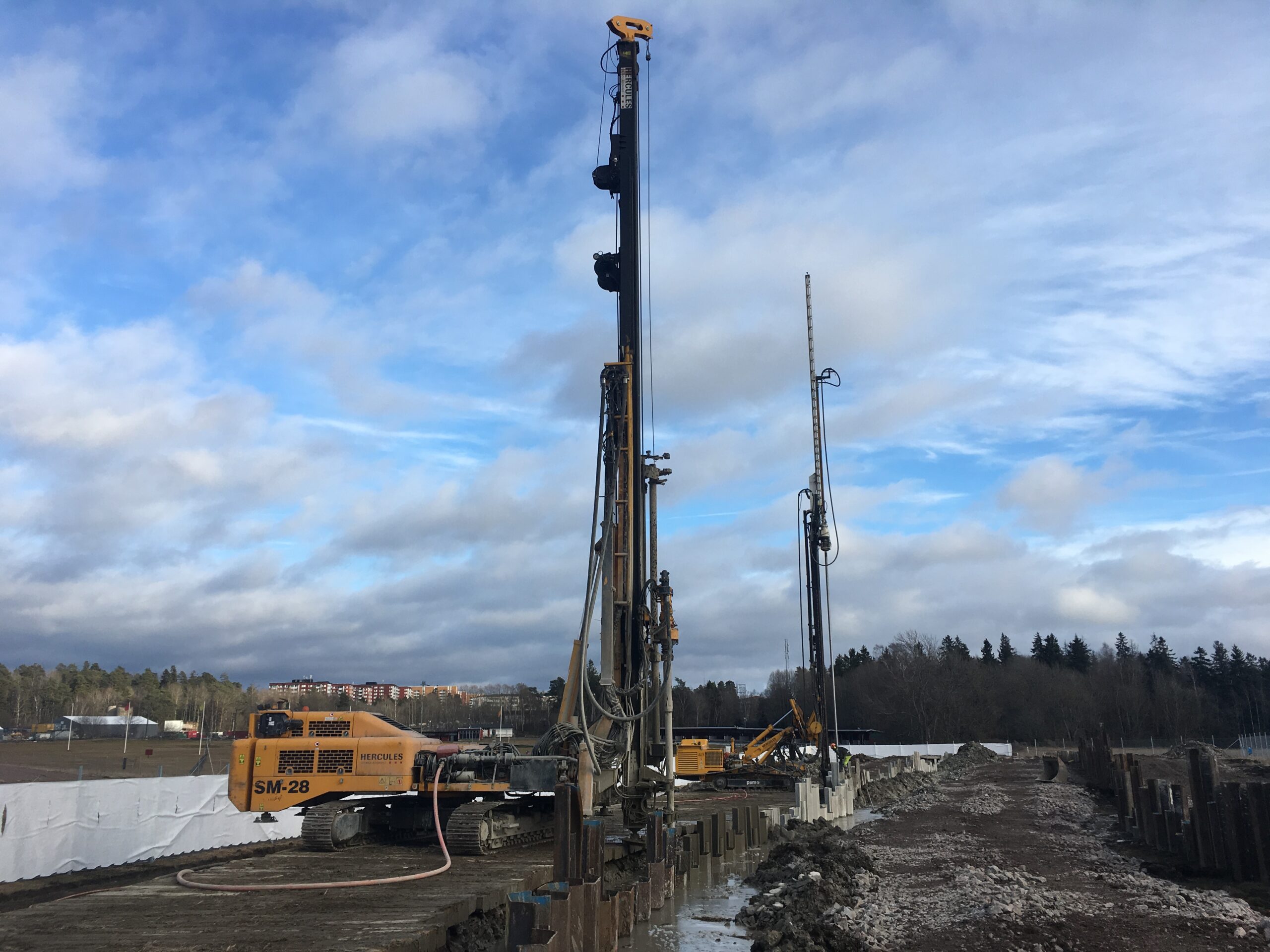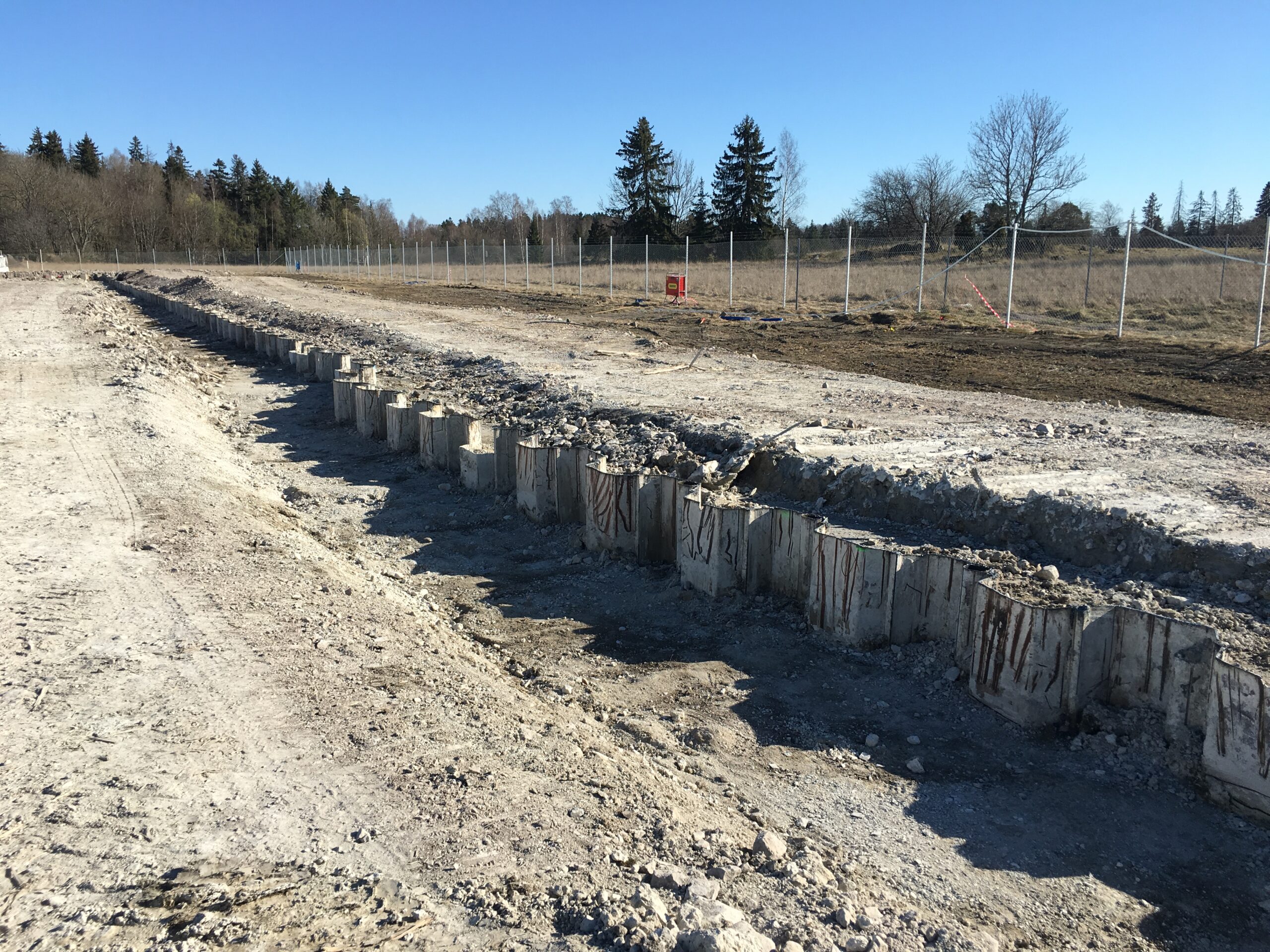Barkarby-Stockholm, Sweden
Descrizione progetto
Al fine di migliorare i collegamenti e ridurre i tempi di percorrenza mediante l’utilizzo dei trasporti pubblici, è stato deciso di estendere la Linea Blu della metropolitana di Stoccolma per collegare Akalla e Barkarby. Saranno costruite due nuove stazioni, una collocata nel quartiere emergente di Barkarby e l’altra vicino all’ex campo d’aviazione militare di Barkarby.
Lo scopo del lavoro riguarda la sigillatura mediante colonne di jet grouting tra il piede della palancola e la roccia, lungo il perimetro di un’area sita nelle zone limitrofe all’ex campo di aviazione militare di Barkarby, nel comune di Stoccolma in Svezia.
La sigillatura in oggetto è stata realizzata al fine di impermeabiliz-zare l’area sottostante nella quale deve essere realizzato l’imbocco dell’estensione del tunnel della metropolitana verso Akalla e Barkarby.
Il trattamento prevedeva nella parte superiore una sovrap-posizione minima di 100 cm sopra al piede della palancola e nella parte inferiore almeno 50 cm di incastro in roccia.
| Owner | STOCKHOLMS LÄNS LANDSTING |
|---|---|
| Main Contractor | NCC AB |
| Durata dei lavori | Feb-April 2019 |
Il progetto
La sigillatura mediante jet grouting è stata affidata ad HERCULES-TREVI Foundations AB, società svedese del gruppo TREVI.
La topografia dell’area risultava prevalentemente pianeggiante, caratterizzata da superfici erbose facenti parte di un’area naturale protetta.
Sulla base dell’analisi del suolo esistente, oggetto del trattamento, si è riscontrata la prevalenza di suolo a carattere morenico, con trovanti che ostacolano l’infissione delle palancole e ghiaie che consentono un notevole flusso di acqua sotto le palancole rimaste alte. Pertanto è stata progettata la sigillatura tra il bordo inferiore delle palancole e la roccia, avvenuta mediante colonne in jet grouting con getto a mono fluido, di diametro 1000 mm con interasse di 600 mm, ovvero una colonna per ogni palancola.
Al termine della produzione la larghezza media delle colonne è stata di 2,4 m con profondità media di 10,50 m. La perforazione libera è stata effettuata sino ad 80-100 cm all’interno della roccia sana, mentre l’iniezione di boiacca cementizia è stata effettuata per 50 cm in roccia sino ad arrivare a 100 cm sopra il piede della palancola.
Il getto delle colonne è stato effettuato secondo una sequenza precisa che prevedeva la realizzazione di colonne primarie (aperture), colonne secondarie e infine terziarie (chiusure). Il volume nominale iniettato ha rispettato i 750 l/m per colonna previsti da progetto, con un rapporto acqua cemento pari a 1:1.
Per verificare i parametri da utilizzare durante la produzione, è stato allestito ad inizio cantiere un campo prova dove sono state installate due colonne singole spaziate 2,5 m con parametri operativi diversi e un gruppo di tre colonne sovrapposte, spaziate 63 cm, con gli stessi parametri.
Al fine di verificare il diametro e la sovrapposizione totale delle colonne, sono stati installati dei tubi in plastica, sia esternamente alle colonne, sia internamente alle colonne singole e alle colonne sovrapposte, ed è stata effettuata una campagna di
rilievo sismico tra i tubi con il metodo della “tomografia a foro incrociato” (CHT) utilizzando onde compressive e di taglio.
Sulla base dei risultati del campo prova sono stati adottati i parametri più appropriati ed efficaci per soddisfare le specifiche di progetto.
 Español
Español
 Italiano
Italiano  English
English 
